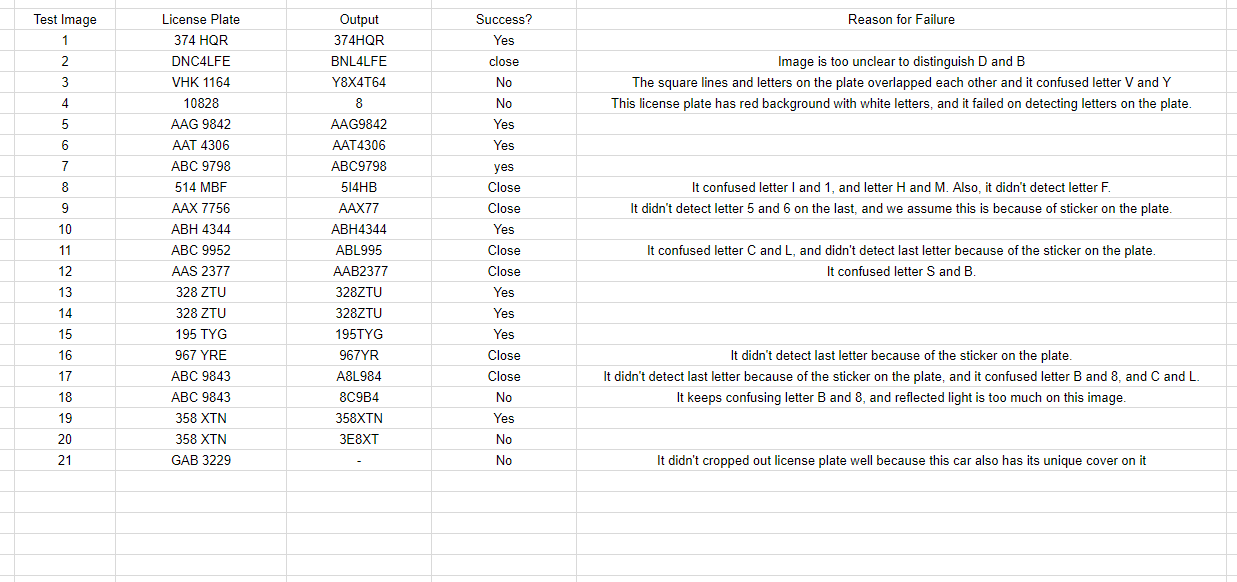Cost
In terms of cost our implementation is much more accessible than current solutions. On average, the price of a modern License Plate Recognition system is around $1,000 for just the software alone. Our software, posted to this website is for all intents and purposes free to the general public.
Application
Outside of license plate recognition, our software could find other uses. Specifically, the ingenuity in our edge detection to find a rectangular shaped object. This could be used in similar applications, like as document scanner and reader, or as part of a package reading system in a shipping facility. The flexibility of our core ideas to be used in these potential cases add value to the application outside of recognizing license plates.
Within reading license plates, our software sits somewhere in the middle when it comes to handling a variety of cases. Our program is great at deciphering a wide variety of license plates in many different types of lighting. From this standpoint, the user does not have to worry about an expensive lighting system to cover the area they wish to monitor. However, there are a few areas where our software is lacking. First, in the international realm the software will need to be tuned to handle cases where a 2:1 aspect ratio in plate size is not guaranteed. Second, our software cannot handle images where the plate sits at an angle. Future implementations will need a better form of filtering in order to handle this case. Third, our software struggles when the sides of the license plate are covered or if there is some type of protector. These three drawbacks are unfortunate, but stem from conscious trade offs made during the filtering process. Given the specific application by the user, the filtering could be tuned in a way to be better in some of these areas.
Effectiveness
In terms of overall effectiveness, our program is below the current industry standard. Many current systems advertise successful identification at rates up to 99%. However, after further reading, the actual value sits somewhere between 80 and 85%. Given the images in the folder for testing with our code, we found our program to be about 50% accurate. Below is a summary of how our program handles each image and what we believe to be the problem.
